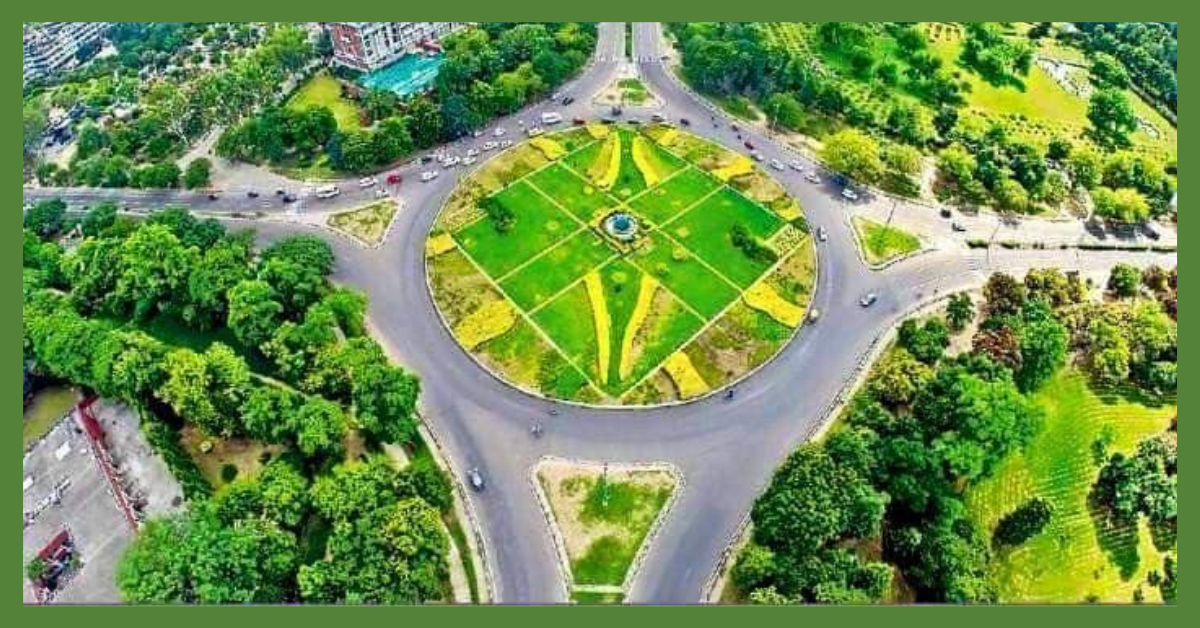A recent report by the Forest Survey of India revealed that ‘City Beautiful’ Chandigarh has achieved another significant milestone- with half of its area classified as green cover. This represents a 9% growth increase in greenery over just 6 years, from 2017-2023.
In the report, compiled by FSI, the forest area in the city stood at 22.03 sq km in 2017 which has been increased to 22.8 sq km in 2023. This increase, in collaboration with the city’s existing green spaces, has raised Chandigarh’s overall green cover percentage to a well-deserved 50.05%.
The FSI report which is compiled every two years using remote sensing technology and ground verification show’s heartening rise in Chandigarh’s green area. Chandigarh’s total area is roughly 114 sq km, and in addition, Sukhna Wildlife Sanctuary boasts a total of 140 sq km. The report indicated that a whooping 70 sq km of this area is not classified as green cover.
Hailing this development as a “big achievement”, UT Administrator Banwarilal Purohit also highlighted the UT administration’s commitment to environmental stewardship, adhering to regulations set forth by the Indian Forest Act of 1927, the Wildlife(Protection) Act of 1972, and the Forest(Conservation) Act of 1980, along with their respective rules.
The credit for this green surge isn’t solely claimed by the administration. UT chief conservator of forests, TC Nautiyal, emphasized the collaborative efforts between the Department of the Forest and Wildlife and the UT administration, recognizing the Greening Chandigarh Action Plan (GCAP) as the key driving force. This annual plan, formulated by a consortium of relevant agencies including the forest department, and the municipal corporation, set ambitious yet achievable targets for planting new trees each year.
“The joint efforts have significantly contributed to the augmentation of the city’s green cover. The Greening Chandigarh Action Plan (GCAP) prepared annually by all relevant agencies, including the forest department, the horticulture wing of the UT engineering department, and the municipal corporation, is instrumental in boosting the city’s greenery. Each department sets an annual target for the plantation,” he stated.
Nautiyal further underscored the department’s dedication to enhancing the quality of Chandigarh’s forest by promoting the cultivation of native species like shisham, shahtoot, Khair, and babul. Public participation also encouraged the greener impact, by distributing free sampling to residents, fostering a sense of ownership and responsibility among the citizens.
It is also important to acknowledge the role of the central government in supporting these initiatives. The Ministry of Environment, Forest and Climate Change(MoEFCC) provided both technical expertise and financial assistance to states and UT through various centrally sponsored schemes. Schemes such as the Green India Mission (GIM), the Forest Fire Prevention and Management Scheme, CAMPA (Compensatory Afforestation Fund Management and Planning Authority), Nagar Van Yojana(Urban Forest Scheme), and others bolstered the country’s forest cover and urban tree cover.
Chandigarh’s success story serves as an inspiration for the other cities in India. By prioritizing green initiatives, fostering collaboration between government departments and the public, and focusing on native species, urban areas can easily achieve significant progress in creating a healthier, more sustainable environment for their residents.




